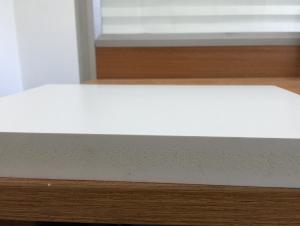Plastic pipes and fittings have become an integral part of modern plumbing systems. They are versatile, durable, and relatively easy to install, making them a popular choice for both residential and commercial applications. In this article, we will explore the world of plastic pipes and fittings, delving into their history, types, advantages, and some common installation techniques.
A Brief History of Plastic Pipes and Fittings
The use of plastic in the construction of pipes and fittings dates back to the mid-20th century. Early plastics like PVC (polyvinyl chloride) and CPVC (chlorinated polyvinyl chloride) were developed and soon found their way into the plumbing industry. Over the years, advancements in material science have led to the creation of new types of plastic pipes with improved properties, such as PEX (cross-linked polyethylene) and PB (polybutylene).
Types of Plastic Pipes and Fittings
Plastic pipes come in various types, each with its own set of characteristics and applications. Here are some of the most common types you might encounter:
– PVC Pipes: Known for their resistance to corrosion and chemicals, PVC pipes are widely used for drain, waste, and vent systems.
– CPVC Pipes: With higher heat resistance than PVC, CPVC pipes are suitable for hot water supply lines.
– PEX Pipes: Flexible and durable, PEX pipes are often used for radiant heating systems and potable water supply.
– PB Pipes: Known for their resistance to corrosion and their ability to withstand high temperatures, PB pipes are ideal for hot and cold water supply lines.
– ABS Pipes: Commonly used for waste and vent systems in commercial buildings, ABS pipes are valued for their strength and durability.
Advantages of Using Plastic Pipes and Fittings
There are several reasons why plastic pipes and fittings have become a favorite among plumbers and homeowners alike:
– Cost-Effectiveness: Plastic pipes are generally less expensive than their metal counterparts, making them an attractive option for those looking to save on installation costs.
– Lightweight: Being lighter than metal pipes, plastic pipes are easier to handle and install, reducing the physical strain on workers.
– Corrosion Resistance: Unlike metal pipes, plastic pipes do not corrode, which means they have a longer lifespan and require less maintenance.
– Flexibility: Some types of plastic pipes, like PEX, can bend around corners and through tight spaces, making them ideal for challenging installations.
– Non-Conductive: Plastic pipes do not conduct electricity, reducing the risk of electrical hazards in the plumbing system.
– Easy to Install: With the right tools and techniques, plastic pipes can be quickly and easily installed, often with fewer connections than metal pipes.
Common Installation Techniques
Installing plastic pipes and fittings can be a straightforward process if you follow these general steps:
1. Planning: Before you begin, plan the layout of your plumbing system, taking into account the location of fixtures, appliances, and access points.
2. Measuring and Cutting: Measure the lengths of pipe you will need and cut them to size using a pipe cutter or a fine-toothed saw. Be sure to deburr the edges to ensure a smooth connection.
3. Joining: Depending on the type of plastic pipe, you may use solvent cement, push-fit connectors, or heat fusion to join the pipes and fittings together. Always follow the manufacturer’s instructions for the best results.
4. Securing: Once the pipes are joined, secure them in place using pipe straps or clips to prevent movement and ensure stability.
5. Testing: After the installation is complete, test the system for leaks and proper function. Address any issues that arise promptly.
The Role of Plastic Pipes in Sustainable Plumbing
Plastic pipes and fittings not only offer practical benefits but also contribute to sustainable plumbing practices. They are made from recyclable materials and can be used in systems that conserve water, such as rainwater harvesting and greywater recycling.
A Personal Touch: Why I Love Working with Plastic Pipes
As a plumber, I have a personal affinity for plastic pipes. They are a testament to human ingenuity and the constant drive for innovation. I appreciate the ease with which they can be manipulated and the peace of mind they provide in terms of safety and reliability.
Conclusion
Plastic pipes and fittings have come a long way since their inception. They are now a staple in the plumbing industry, offering a range of benefits that make them an excellent choice for various applications. Whether you’re a homeowner looking to upgrade your plumbing system or a professional plumber seeking efficient solutions, plastic pipes and fittings are a solid option to consider.

